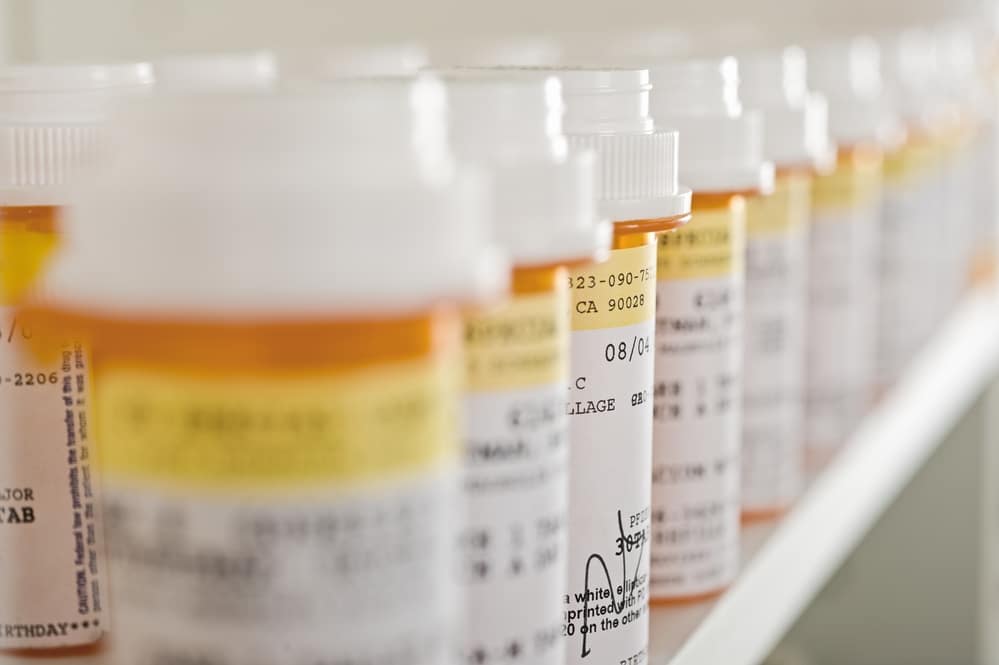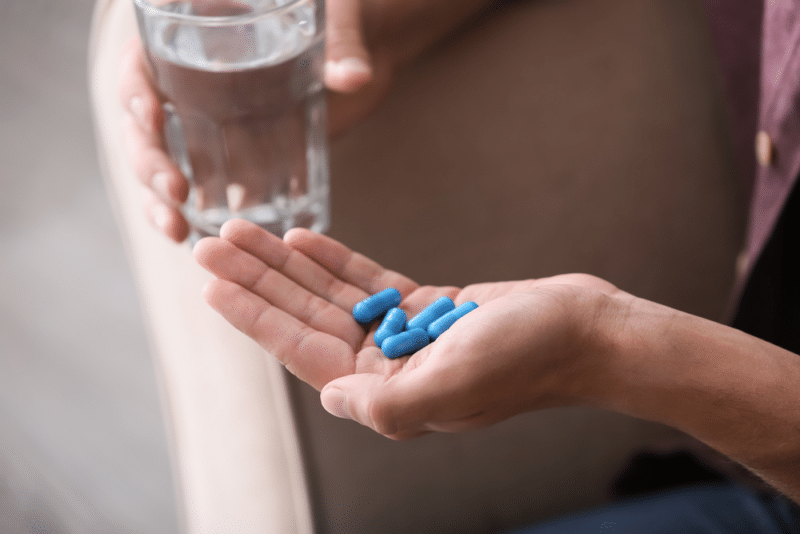Prescription Drugs Responsible for More Deaths than Illicit Drugs

Deaths Due To Prescription Drugs Now #1 Cause of Deadly Overdose
New prescription drugs are being created each day to treat every condition under the sun and then some. As the pharmaceutical industry is continually producing new medications, demand is following suit. And unlike street drugs and illegal drugs, more people have legitimate access to prescription drugs than ever and many of them are using them irresponsibly with unanticipated, negative consequences including deaths caused by pharmaceutical drugs.
This new wave of prescription drug misuse and abuse made possible by its greater accessibility has resulted in prescription drugs overdose overtaking overdoses caused by illicit drugs at a time when both totals are at all-time highs.
If you or a loved one are struggling with prescription drug addiction, please call 772-774-3872 for information on prescription drug abuse treatment.
Leading to Prescription Drugs Addiction

Prescription medication overdoses frequently have innocent roots as they are typically prescribed to treat a genuine condition. Patients are often given access to their first prescription drugs by a doctor who is a trusted authority figure. The condition that necessitated the prescription drugs can be as mild as persistent back pain, although many people who take prescription drugs fall into addictions as a result of either chronic or severe pain or both.
The nature of addiction often makes it, so an individual is addicted long before he or she is even completely aware of it. After taking the same prescription drugs for a certain amount of time, patients can become accustomed to the way it makes them feel, which turns into wanting the drug and eventually needing it, even after the initial condition may have subsided, all without the patient fully realizing it.
Denial is commonly one of the first obstacles that must be overcome in order to address a substance use disorder (SUD)
A study conducted by the Mayo Clinic has shown that almost 70 percent of Americans take at least one prescription drug while more than half of the countries’ adults take two or more prescriptions.
The top categories of prescribed drugs in the United States are antibiotics, antidepressants and painkilling opioids. Twenty percent of American prescription patients were found to be on 5 or more concurrent medications. Thirteen percent of the participants reported having at least one active opioid prescription.[1]
In 2015, the total number of individual prescription drugs filled at pharmacies was just over 4 billion.[2] That’s nearly 13 prescriptions for every man, woman and child in the United States, according to the 2015 census. It’s little wonder that overdose deaths caused by prescription medication have taken off to such a degree. Approximately 21.5 million Americans, 12 years or older, have been diagnosed with a substance use disorder, with 1.9 million of them involved with prescription painkillers. [3] Research has shown that approximately 4.3 million people, 12 years or older, and 2.9 million adults, 26 years or older, have used prescription pain relievers for non-medical purposes. [4]
Deaths From Prescription Drugs: The Hard Data

The number of deaths from prescription drugs like opioid pain relievers, excluding non-methadone synthetics such as illicit fentanyl, which warrants its own category, nearly doubled from 2002 to 2011. In the United States, there were approximately 17,000 prescription opioid overdose deaths in 2011 as compared to just over 9,000 in 2002. However, the number of overdose deaths in the United States caused by benzodiazepines such as Xanax, Valium and Ativan has more than quadrupled between 2002 and 2015. There were just under 2,000 deaths by benzodiazepine overdose in 2002 but almost 9,000 in 2015.[5]
According to the National Institute on Drug Abuse (NIDA), over six out of 10 drug overdose deaths in the United States are caused by an opioid. Since 1999, the number of deaths caused by overdoses of opioids such as OxyContin, Vicodin, and methadone quadrupled, keeping in line with prescription opioid sales’ comparable growth. Despite this enormous change, Americans have not reported any overall difference in the amount of pain that they experience. And yet, 91 people die from an opioid overdose in the United States every day. From 2000 to 2015, the number of deaths by any kind of drug overdose climbed to over half a million, and as long as prescription drug sales continue growing, overdoses will do the same. [6]
“91 people die from an opioid overdose in the United States every day.”
For context, some of the major causes of death in 2015 were:
The Center for Disease Control and Prevention (CDC) reported that rates for eight out of the 10 leading causes of preventable deaths in the United States went up in 2015, causing the nation’s life expectancy to do down for the first time in over 20 years.[7]
Contact our rehab in Port St. Lucie Florida to go over health insurance here!
Types of Prescription Drugs

The three most prominent categories of prescription drugs are opioids, stimulants and depressants, which include sedatives and tranquilizers.
Opioids are typically prescribed to patients with acute and/or chronic pain. Acute pain starts all of a sudden, often with a sharp sensation, but doesn’t occur for a period longer than six months and is triggered by an injury of some kind.
Chronic pain can last for years and does not always have an injury associated with it. If a patient with chronic pain isn’t provided with a way to manage their pain, it can bring about long-term effects including depression, a loss of interest in formerly enjoyed activities and difficulty getting around.
The problem with prescribing opioids to patients with chronic pain is that opioids are known to be very addictive if taken over the long term. This conflict has undoubtedly contributed to the prevalence of prescription drug opioid addiction.
Opioids work by docking with the pain receptors in the brain and spinal cord, preventing pain signals from being transmitted.[9] They also greatly increase the overall amount of dopamine that is released, the neurotransmitter that is most associated with pleasure, further strengthening the opioid’s addictive power.
Both sedatives and tranquilizers are depressants that primarily interact with the central nervous system (CNS). These compounds increase the concentration of certain neurotransmitters in the brain that slow down brain activity. However, patients can quickly become tolerant of the medication, requiring larger and larger doses in order to achieve the same, strong effect.
This is a dangerous characteristic possessed by many addictive substances. Additionally, depressant patients must gradually taper their usage leading up to the end of their prescription if they wish to avoid a potentially life-threatening withdrawal.
Stimulants concentrate specific neurotransmitters in such a way that creates feelings of euphoria, increasing blood pressure and heart and breathing rates.
But when a patient chooses to abuse his or her prescription, either by taking larger and/or more frequent doses or crushing the prescription and snorting it, which increases the drug’s potency, he or she takes on a high risk of becoming addicted.
Amphetamine usage for more time than prescribed and/or in higher doses can result in toxic psychosis, physiological and behavioral disorders, ulcers, malnutrition, skin conditions, heart conditions, convulsions, comas and death. Some common prescription drugs of either category are:
Opioids
Codeine: Prescribed to treat mild pain, sometimes for coughs and severe diarrhea
Hydrocodone (Vicodin, etc.): Prescribed for pain in general, associated with pain from injuries of a physical or dental nature
Morphine: Given to patients experiencing severe pain following surgeries
Oxycodone (OxyContin, Percocet, etc.): Used for moderate to severe pain over a long-term period
Depressants: Sedatives & Tranquilizers
Benzodiazepines (Xanax, Valium, etc.): For short-term use due to their addictive natures, tranquilizers that fit into this sub-category are prescribed to treat anxiety, tension and panic attacks. Sedatives that are also benzodiazepines are given to patients with sleep disorders
Non-benzodiazepines (Ambien, Lunesta, etc.): Prescribed for long-term treatment of sleeping difficulties
Seeking Treatment For Prescription Drugs Addiction

The United States prides itself on leading the rest of the world in a variety of different areas but one instance that is unlikely to result in a rash of flag-waving is the amount of Americans that use, misuse and abuse prescription drugs, particularly painkillers.
Some shocking prescription drug abuse statistics are that the United States accounts for 99 percent of the world’s hydrocodone use and 80 percent of the world’s oxycodone use, the active ingredients in Vicodin and OxyContin, respectively.
Has the amount of pain that people experience in the United States significantly increased in the past 15 years or has our collective tolerance for pain diminished to the point that we need to constantly be medicated to such a high degree? As parts of the United States become more and more subject to globalization, even more medication will be prescribed, further encouraging Americans to seek prescription drugs, especially painkilling opioids.
Many doctors will recommend acupuncture, counseling, exercise, massage, meditation, physical therapy, yoga or other holistic methods in order to manage pain. However, the typical reaction in the United States is to prescribe opioids or analgesics, which accounts for the explosive increase in the use of prescription opioids and in turn, deadly opioid-related overdoses.
Some factors that have led to prescription drug use expanding are the safety associated with prescription drugs, the idea that modern medicine can and should be applied to almost any condition and an increase in direct-to-consumer marketing by the pharmaceutical industries.
The bulk of prescriptions in the United States are held by women and older men and women, however, widespread prescription drug use is a systemic issue that affects Americans of all ages.
For instance, antidepressants and opioids are being prescribed in the highest numbers to young and middle-aged adults, potentially indicative of a mental health crisis in our country’s future.
The total American expenditure on prescription drugs exceeded $250 billion in 2009, representing 12 percent of the country’s total personal health care costs. These trends are all expected to accelerate in the coming years.[1]
If you or someone you know is addicted to prescription drugs, please contact us. We can help you get back to the time before your substance abuse and subsequent dependence defined your life. Behavioral Health Centers can also show you healthier and more effective ways of treating your root illness.
We are a comprehensive recovery center located in scenic North St. Lucie, FL, specializing in drug and alcohol dependence, mental illness and dual diagnosis. Please give our Port Saint Lucie rehab a call today at 772-774-3872 to learn more.
- https://www.cbsnews.com/news/study-shows-70-percent-of-americans-take-prescription-drugs/
- https://www.kff.org/health-costs/state-indicator/total-retail-rx-drugs/?currentTimeframe=0&sortModel=%7B%22colId%22:%22Location%22,%22sort%22:%22asc%22%7D
- https://www.asam.org/docs/default-source/advocacy/opioid-addiction-disease-facts-figures.pdf
- https://www.samhsa.gov/data/sites/default/files/NSDUH-FRR1-2014/NSDUH-FRR1-2014.pdf
- https://www.drugabuse.gov/drug-topics/trends-statistics/overdose-death-rates
- https://www.cdc.gov/opioids/basics/epidemic.html
- https://www.chicagotribune.com/nation-world/ct-us-overdose-deaths-20161208-story.html
- https://www.drugabuse.gov/about-nida/legislative-activities/testimony-to-congress
- https://www.drugabuse.gov/publications/research-reports/misuse-prescription-drugs/what-classes-prescription-drugs-are-commonly-misused







